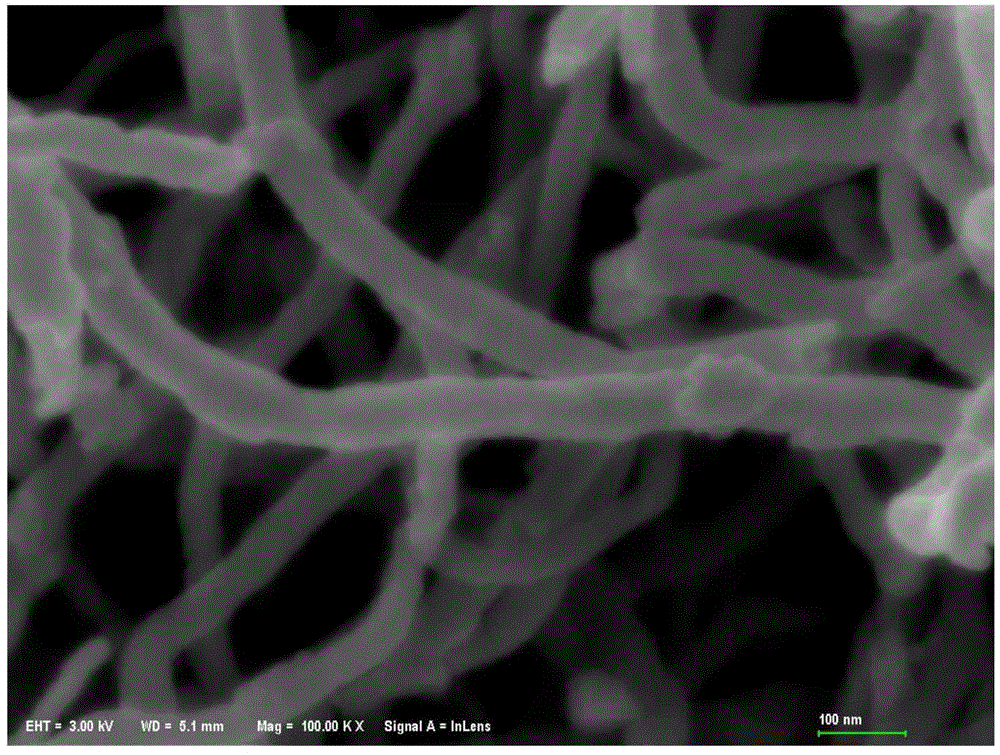A method of preparing a high-conductivity aluminum-based composite material by utilizing low-resistivity carbon nanotubes
A technology of aluminum-based composite materials and carbon nanotubes, applied in the field of aluminum-based composite materials, can solve the problems of poor wettability between carbon nanotubes and aluminum liquid, low adhesion strength, and low conductivity of reinforced aluminum-based composite materials , to achieve the effect of improving bulk conductivity, excellent dispersion performance, and solving key problems
- Summary
- Abstract
- Description
- Claims
- Application Information
AI Technical Summary
Problems solved by technology
Method used
Image
Examples
Embodiment 1
[0034] see figure 1 , the preparation method of the aluminum matrix composite material is realized in this way:
[0035] See step one figure 2 , the oxidation treatment process of carbon nanotubes:
[0036] Use the original multi-walled carbon nanotubes with a diameter of 60nm, put them into a muffle furnace or other high-temperature equipment, and oxidize them at a high temperature of 600°C for 30 minutes to remove amorphous carbon and some easily volatilized or decomposed at high temperatures material, and make some defects on the surface of the original carbon nanotubes re-grow and close, and powder A is obtained;
[0037] See step two image 3 , pickling and soaking process of carbon nanotubes:
[0038] Add the multi-walled carbon nanotubes treated by high-temperature oxidation into concentrated hydrochloric acid with a concentration of 36.5%, soak them, apply stirring at 100 rpm and mix for 10 minutes, take them out, wash them to neutrality, and obtain powder B that ...
Embodiment 2
[0046] The difference between this embodiment and Embodiment 1 is that the carbon nanotubes used in step 1 are single-walled carbon nanotubes with a diameter of 2 nm.
Embodiment 3
[0048] The difference between this embodiment and embodiment 1 is that the halogen substance used in step 2 is simple iodine.
PUM
| Property | Measurement | Unit |
|---|---|---|
| diameter | aaaaa | aaaaa |
| diameter | aaaaa | aaaaa |
Abstract
Description
Claims
Application Information
 Login to View More
Login to View More - R&D
- Intellectual Property
- Life Sciences
- Materials
- Tech Scout
- Unparalleled Data Quality
- Higher Quality Content
- 60% Fewer Hallucinations
Browse by: Latest US Patents, China's latest patents, Technical Efficacy Thesaurus, Application Domain, Technology Topic, Popular Technical Reports.
© 2025 PatSnap. All rights reserved.Legal|Privacy policy|Modern Slavery Act Transparency Statement|Sitemap|About US| Contact US: help@patsnap.com



